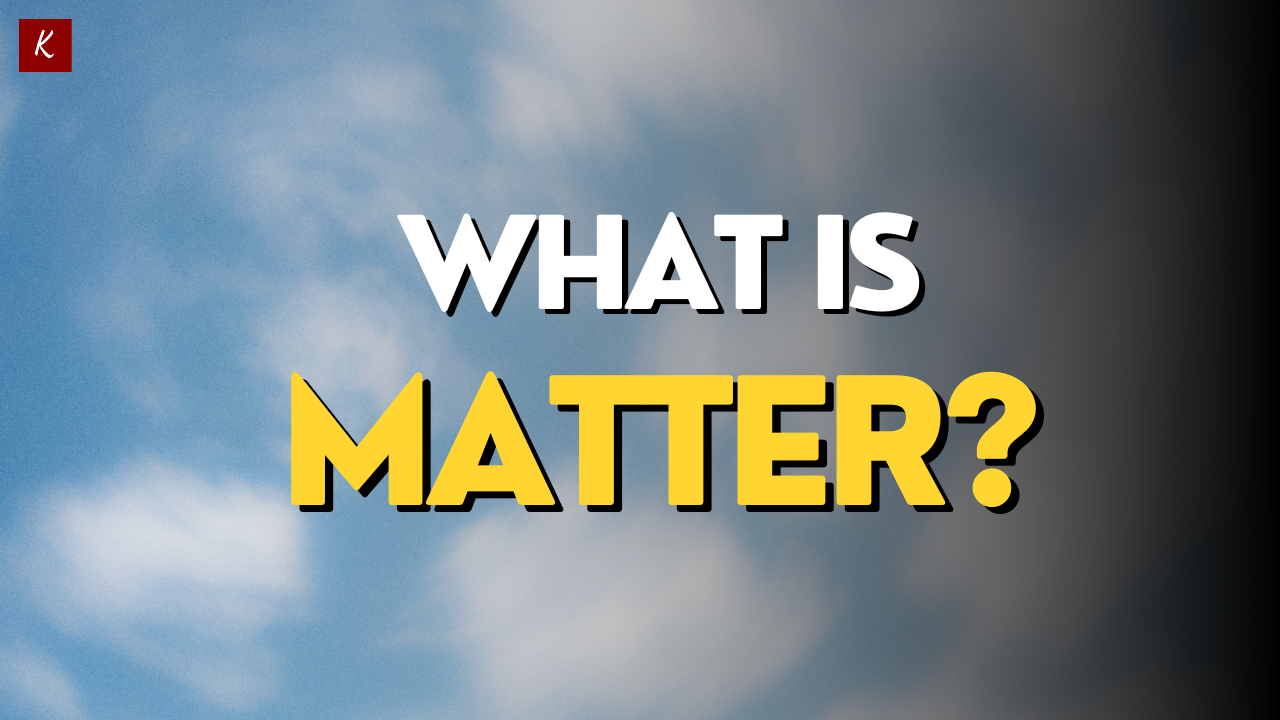What is Matter?
What is Matter? Everything we see or touch is matter. For example, the food we eat, the water we drink, the air that surrounds us, the sun, the stars and the moon are all made up of matter. Simply, anything that has mass and occupies space is matter.
Now, feel and observe, what is not matter? Heat, light, sound, happiness, etc. They are not having matter as they neither have mass, nor occupies space.
Characteristics of matter
1. Matter occupies space – All things we are surrounded with occupy space. Air which cannot be seen, also occupies space. The amount of space occupied by matter is called its volume.
2. Matter has mass – The amount (quantity) of matter contained in an object is called its mass.
Composition of matter
Matter is made up of many tiny particles called atoms. An atom usually does not exist independently. Molecules are the smallest particles (smaller than the atoms) of matter which can has an independent existence and can retain the physical and chemical properties of the matter.
One or more atoms make up molecules.
Check your Progress
Write true or false. Correct the false statements.
1. Matter occupies occupies space and has mass.
2. Air is matter.
3. The amount of matter contained in an object is known as its volume.
4. An atom is the smallest particle of matter which can exist independently.
Energizer
Classify the following objects as solid, liquid or gas.
1. Cell phone
2. Book
3. Carbon dioxide
4. Oxygen
5. Juice
6. Water
7. Ice
8. Water vapour
9. CNG (Compressed Natural Gas)
10. Milk
States of matter
Matter is of three states depending upon its temperature: solid, liquid and gas.
Solid, liquid and gas are the three states of matter. All states of matter contain atoms and molecules. There are three different states due the difference in the placement of molecules of matter. The force because of which the molecules of a substance are held together is called the intermolecular force of attraction. Depending upon the strength of intermolecular force, the spaces between the molecules vary for different states of matter. This space is the intermolecular space.
The state of matter depends on the intermolecular force and the intermolecular space between its molecules.
Also read:
Arrangement of molecules in solids, liquids and gases
Solids
The intermolecular force is the strongest in solids. So practically, the intermolecular space between the molecules of solids is totally absent and are very close to each other. Solids hardly move, they only vibrate.
- Solids have a definite shape
- Solids have a definite volume
- Solids have a texture
- Solids have many sides
- Solids are incompressible
Liquids
The intermolecular force in liquids is not as strong as in solids and not as weak as in gases. So the intermolecular space in liquids is more than the solids and the molecules are less close to each other. The molecules of liquid can move from one position to the other within the liquid and can glide over each other. Thus, liquids have the property of being able to flow.
- Liquids do not have a definite shape but have definite volume
- Liquids have a tendency to flow (fluidity)
- Liquids cannot be compressed much
- Liquids have one free surface
Gases
The intermolecular force of attraction is the weakest in gases as compared to solids and liquids. So the intermolecular space the largest in gases. As a result, the molecules of gases are very far from each other and occupy the whole space available to them. Oxygen and carbon dioxide are some basic examples of gases present around us.
- Gases have maximum fluidity, or capacity to flow
- Gases are highly compressible
- Gases have no free surface
Think and Answer 💡
1. Can you hold water in your hands?
Ans. Yes, it is possible if we make a small puddle kind of bowl in our hands. We can also hold one drop of water on our finger which proves that we can hold water in our hands.
2. A substance can be easily compressed. Predict its state.
Ans. Liquids can be compressed slightly. Gases are highly compressible.
Star Fact
Generally, the term ‘fluids’ is used for liquids. However, fluids are substances that can flow. Therefore, both liquids and gases are fluids.
Exercises!
Matter ~ Quiz
This quiz contains MCQs framed from the above article.
ALL THE BEST!! 👍


